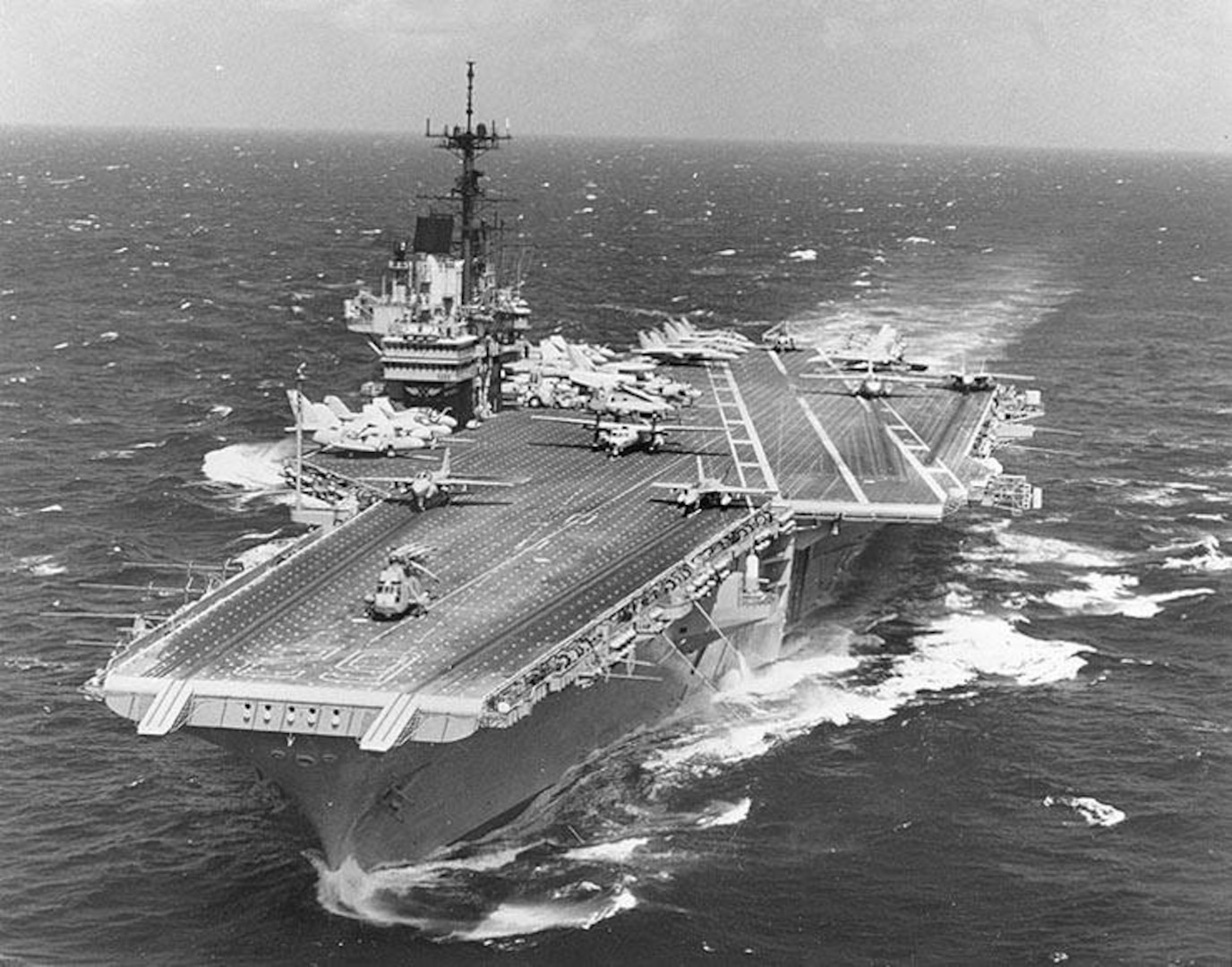Aircraft Carrier Uss Independence - The fifth USS Independence (CV/CVA-62) is a Forrestal-class aircraft carrier of the United States Navy. She was the fourth and final member of the Forrestal-class of conventional-powered Supercarriers. She entered service in 1959, with much of her early years spent in the Mediterranean Fleet.
On 25 September 1970, word was received that Gamal Abdel Nasser, President of the United Arab Republic had died; an event that might plunge the entire Middle East into a crisis. Independence, along with John F. Kennedy, Saratoga, and seven other U.S.
Aircraft Carrier Uss Independence
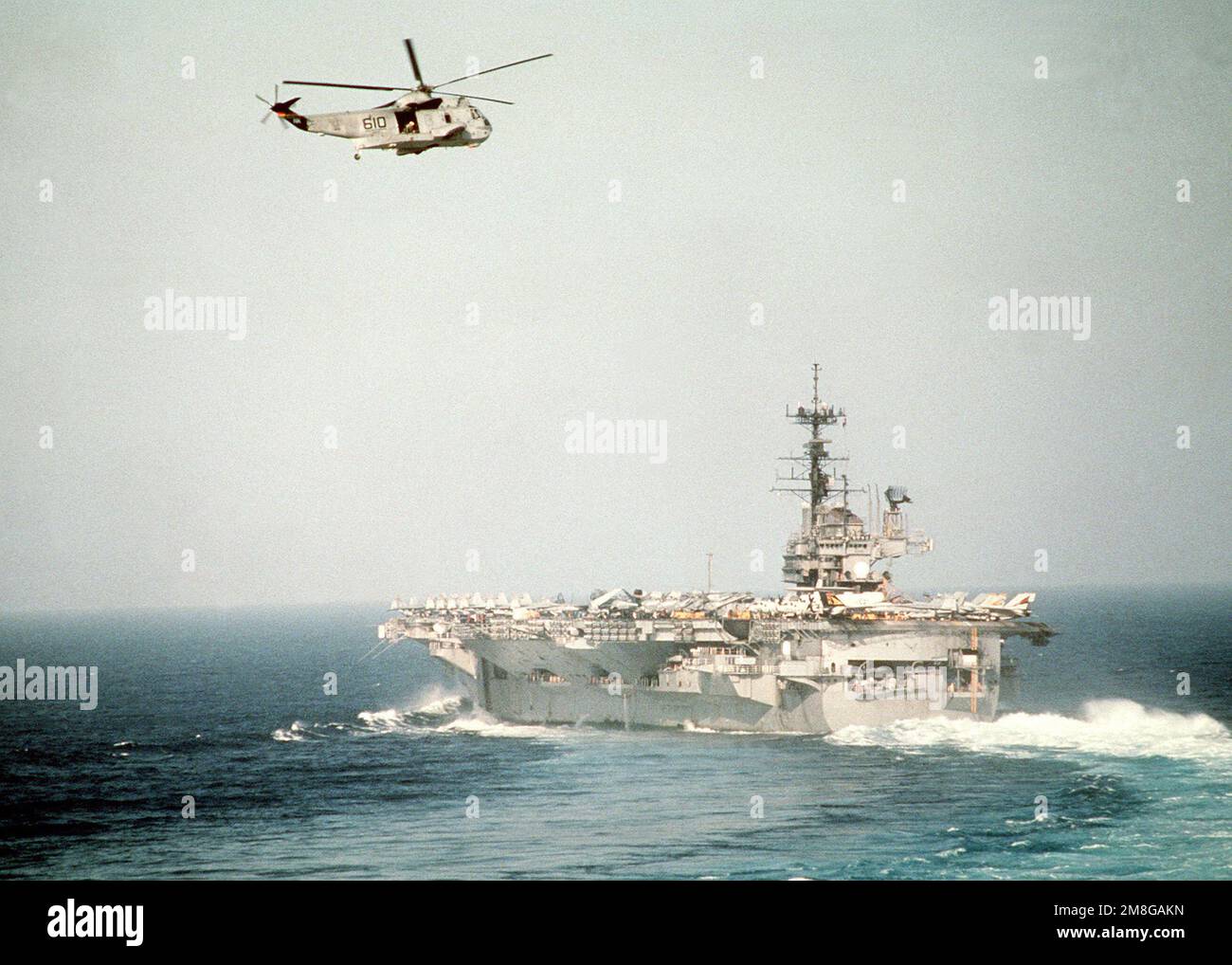
Navy ships were put on standby in case U.S. military protection was needed for the evacuation of U.S. citizens and as a counterbalance to the Soviet Union's Mediterranean fleet. Portside of USS Independence's (CVL-22) island at Hunters Point,
Clare Fitzgerald
19 June 1944. A YE radio beacon is mounted atop the foremast, with the antenna of an SG surface-search Radar fitted to the platform immediately below the beacon. An SM fighter-direction radar antenna is mounted on the foremast platform.
In August 1944, the USS Independence took part in the Battle of Peleliu, known for being the bloodiest battle in the history of the US Marine Corps, conducting night reconnaissance and combat air patrol. The following month, as part of the Fast Carrier Task Force, she launched a number of strikes on the Philippines, in preparation for the Allied invasion.
When the Japanese failed to launch any counterattacks, Independence returned to daytime operations. As of 26 January 2012 the Navy's Naval Sea Systems Command posted a notice of solicitation for the towing and complete dismantling of multiple CV-59/CV-63 Class Aircraft Carriers in the United States, to include ex-USS Forrestal (CV-59)
, ex-USS Independence (CV-62), and ex-USS Constellation (CV-64).[17] In March 1996, Independence was deployed to the waters east of Taiwan to provide a stabilizing presence amid the Third Taiwan Strait Crisis. She was joined in the area by the Nimitz as the People's Republic of China lobbed missiles into Taiwanese territorial waters.
Testing And Workup
Upon returning to Yokosuka in April 1996, the ship was visited by President Bill Clinton as part of an official state visit to Japan. The objects in this collection are from the U.S. National Archives and Defense Visual Information Distribution Service.
The U.S. National Archives and Records Administration (NARA) was established in 1934 by President Franklin Roosevelt. NARA keeps those Federal records that are judged to have continuing value—about 2 to 5 percent of those generated in any given year.
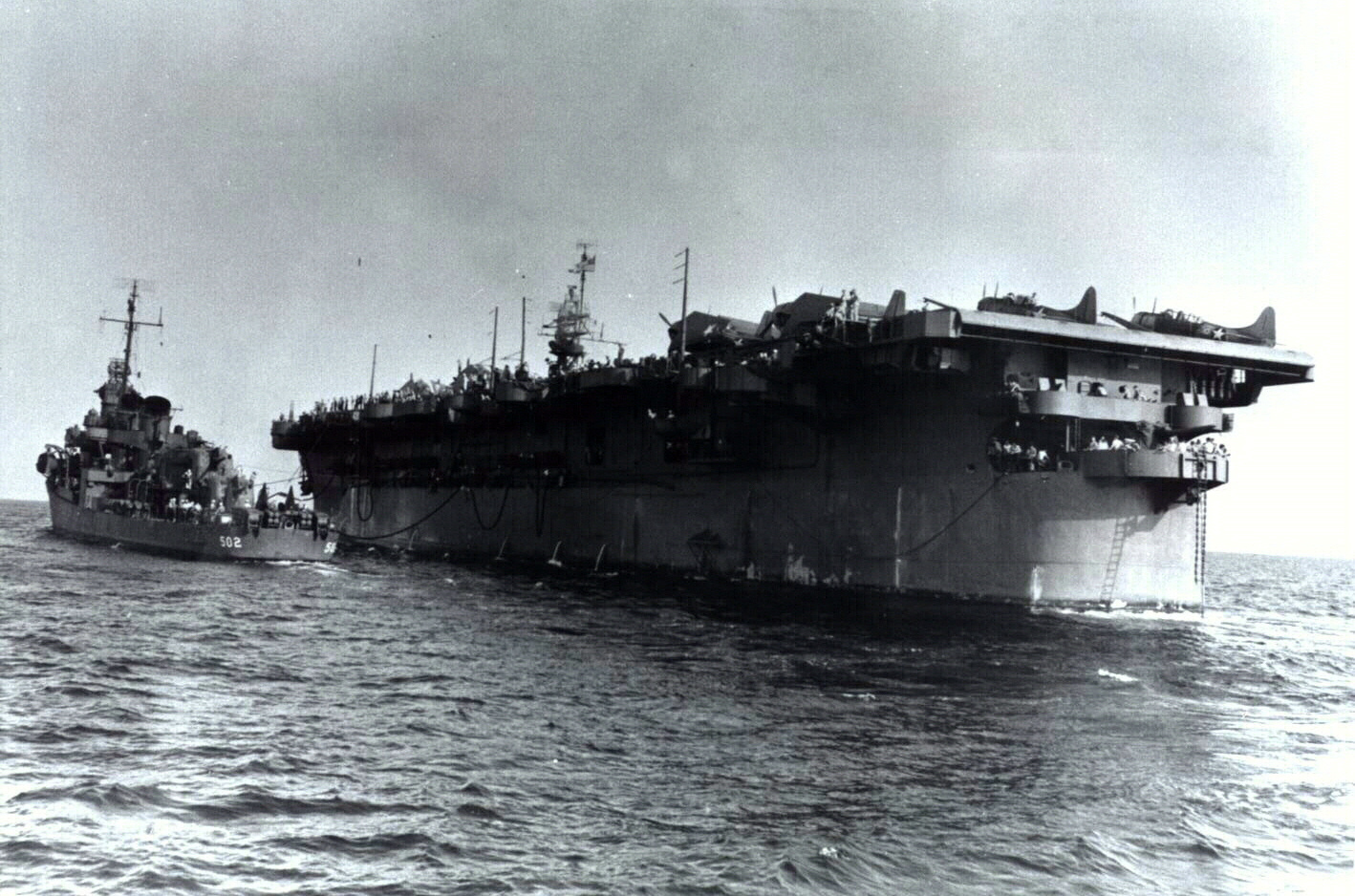
There are approximately 10 billion pages of textual records; 12 million maps, charts, and architectural and engineering drawings; 25 million still photographs and graphics; 24 million aerial photographs; 300,000 reels of motion picture film; 400,000 video and sound recordings;
and 133 terabytes of electronic data. The Defense Visual Information Distribution Service provides a connection between world media and the American military personnel serving at home and abroad. All of these materials are preserved because they are important to the workings of government, have long-term research value, or provide information of value to citizens.
In Popular Culture
On 23 August 1992, Independence entered the Persian Gulf, under the command of Captain Carter B. Refo prepared to enforce an Allied ban on Iraqi flights over southern Iraq below the 32nd parallel north. On 26 Aug President George H. W. Bush announced that the United States and its allies had informed Iraq that in 24 hours Allied aircraft would fly surveillance missions in southern Iraq and were prepared to shoot down any Iraqi aircraft flying south of the 32nd parallel.
The action was precipitated by Iraq's failure to comply with the U.N. Resolution 688 which demanded that the Iraqi government stop the repression of its Shiite population in southern Iraq. In 2009, a deep-water survey by the crew of the NOAAS Okeanos Explorer found the wreck of Independence 2,600 feet below the water of the Monterey Bay National Marine Sanctuary.
Six years later, a team from the US National Oceanic and Atmospheric Administration (NOAA) explored the sunken ship with the autonomous underwater vehicle (UAV) Echo Ranger, which found the vessel to be mostly intact. There were also no signs of radioactive contamination.
NS022235c: Features on an historic photo of Independence are captured in a three-dimensional (3D) low-resolution sonar image of the shipwreck in Monterey Bay National Marine Sanctuary. The Coda Octopus Echoscope 3D sonar, integrated on the Boeing Autonomous Underwater
Vehicle (AUV) Echo Ranger, imaged the shipwreck during the first maritime archaeological survey. The sonar image with orange color tones (lower) shows an outline of a possible airplane in the forward aircraft elevator hatch opening. Afire aft, soon after the "Able Day" atomic bomb air burst test at
Bikini on 1 July 1946. The bomb had exploded off the ship's port quarter, causing massive blast. damage in that area, and progressively less further forward. (Top) Starboard stern view. The ship is still on shakedown cruises off the east coast and

is camouflaged in Measure 14 scheme. The stern mounted 5"/38 mount is visible here. Independence was the only member of her class so completed with 5"/38 guns, and these were replaced by quadruple 40mm mounts before leaving San Francisco for the Pacific War Zone.
Radioman-Gunner of an SBD Dauntless scout-bomber aims his plane's twin .30 caliber machine guns aboard USS Independence (CV-22), during the carrier's shakedown period, 30 April 1943. Note the guns' armor plate, gunsight, and variety of bullet types (with tip
marking sequence: red, black, light blue & plain). The badly damaged hulk of ex-USS Independence (CVL-22) moored at the San Francisco Naval Shipyard. Two Essex-class aircraft carriers that had already been mothballed can also be seen: Hornet (CV-12), left, and Intrepid
(CV-11), right. Photo from Warship Boneyards, by Kit and Carolyn Bonner. "I was in charge of the bomb magazine at the time. Those bombs would just tumble end over end. I would jump up, grab an I beam overhead, lift my legs, and let the bombs roll by.
When it stopped on one side momentarily, I would tie one or two down. Then I would grab hold the I beam again and hang up there like a monkey until the bombs rolled to the other bulkhead and I could secure a couple more.
I could hear the speakers telling the crew to make ready to abandon ship. So I was down there doing my job and thinking to myself, if this thing blows up, I'm going to die anyway so it [doesn't] make
any difference where I am." (Herman Backlund). In 1997, Independence made a four-month deployment, covering several major exercises and seven ports of call. Included in these ports of call were two historic port visits. The first was 28 February 1997 to the island territory of Guam.
Independence was the first aircraft carrier to pull into Guam in 36 years. Grumman F6F-3 Hellcat fighters and two Grumman TBF-1 Avenger torpedo bombers on the light aircraft carrier USS Independence sometime in 1943. Note that the F6Fs are in various states of repainting, as the omission of the right wing star and the addition
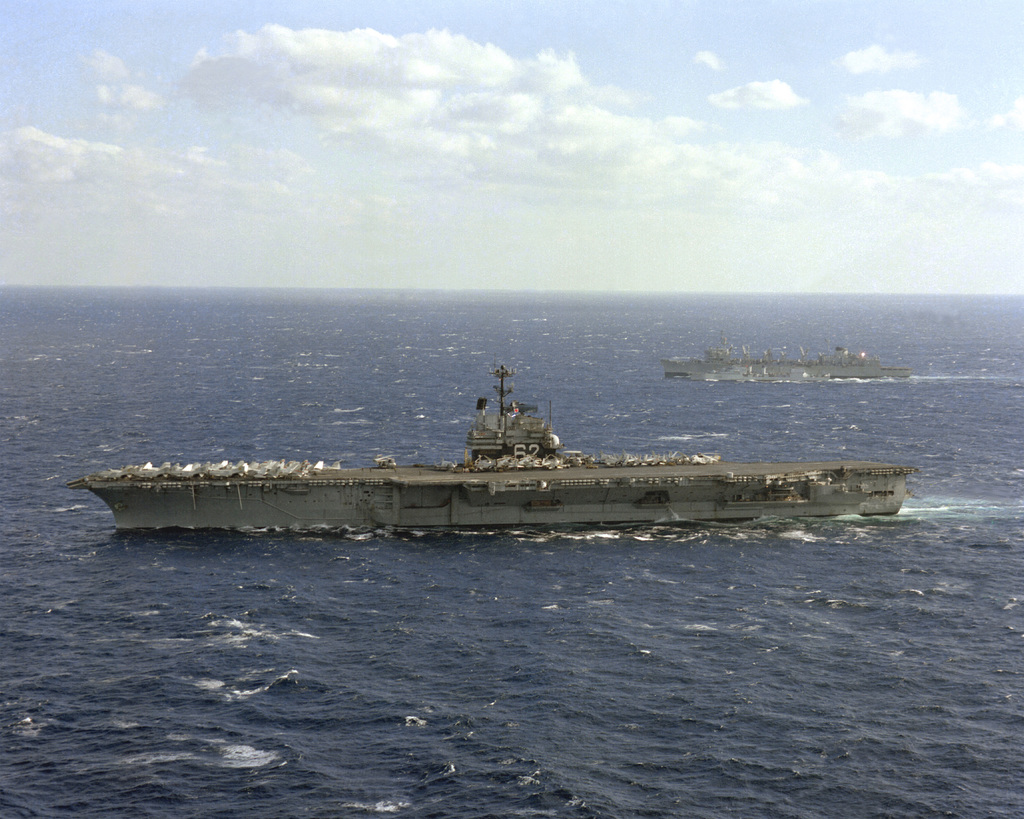
of two white bars to the stars on the left wings and fuselage was ordered in June 1943. These had a red border which was changed to blue in August 1943. Courtesy of the USS Independence Reunion Group, Inc.
In August 1990, with Carrier Air Wing 14 embarked, Independence was sent to deter Iraqi aggression during Operation Desert Shield. Arriving on station in the Gulf of Oman on August 5, Independence was the first carrier to enter the Persian Gulf since 1974. The ship remained on station for more than 90 days and permanently reestablished a U.S.
naval presence in the region. She returned to San Diego on December 23, 1990. Prior to being scuttled, Independence was filled with radioactive waste from the University of California Radiation Laboratory and other vessels that participated in Operation Crossroads.
This led to some controversy, as wildlife and environmental activists worried about the impact of such materials on the ecosystem around the Farallon Islands. Independence departed Norfolk 6 August 1963 to take part in combined readiness exercises in the Bay of Biscay with sea-air units of the United Kingdom and France then entered the Mediterranean 21 August for further duty with the Sixth Fleet.
Cruising throughout the Mediterranean, she gained much valuable experience during combined NATO exercises, including close air support to Turkish paratroops, reconnaissance, communications, and convoy strike support. President Makarios of Cyprus paid her a visit on October 7, 1963, after which she joined in bilateral U.S.-Italian exercises in the Adriatic with Italian patrol torpedo boats, and U.S.-French exercises which pitted her aircraft against French interceptors and a surface action with French cruisers.
Colbert (C611). She returned to Norfolk on March 4, 1964. Launched in August 1942 under the designation CV-22, Independence was commissioned under the command of Capt. George Richardson Fairlamb Jr. in January of the following year.
Upon entering service, she had a displacement of 10,662 tons standard, could carry a crew of 1,569 and was armed with 26 Bofors 40 mm Automatic Gun L/60s. Powered by General Electric turbines, four shafts and four boilers, she had a range of 13,000 nautical miles and could travel at 35.4 MPH.
Independence was built with an angled flight deck with four C-7 steam catapults, two on the bow and two on the angled deck. She was fitted with AN/SPS-37 long-range search radar and AN/SPS-8B height finding radar.
Defensive armament consisted of eight 5"/54 caliber Mark 42 guns mounted on sponsons jutting out from the sides of the ship so they did not interfere with the flight deck. [5][6] The initial air wing of the Forrestal-class carriers
was about 90 aircraft, although this varied with the composition of the airwing.[7] A year later, in 2016, a mission conducted in conjunction with NOAA and the Ocean Exploration Trust led to footage of at least one intact Grumman FGF Hellcat and the partial remains of a Curtiss SB2C-4 Helldiver within the wreck of Independence.
There were also remnants of the light carrier's anti-aircraft weaponry. Deploying from Norfolk in September 1971, the crew earned the designation as 'Blue Nose' sailors when the Independence crossed the Arctic Circle on 28 September. During subsequent operations in the North Sea, Independence conducted cross operation with the British aircraft carrier HMS Ark Royal and transited the English Channel en route to the Strait of Gibraltar and scheduled operations in the Mediterranean Sea.
USS Independence (CVL-22) off Hunters Point in June 1944. Independence shows the unusual tumble-home hull form of her class. The deck cargo consists of twin-engined Lockheed PV-1 Ventura patrol bombers en-route to the combat area. USN photo.
Clare Fitzgerald is a Writer and Editor with eight years of experience in the online content sphere. Graduating with a Bachelor of Arts from King's University College at Western University, her portfolio includes coverage of digital media, current affairs, history and true crime.
In March 1945, after undergoing repairs, the light carrier sailed to Okinawa, where she carried out pre-invasion strikes. When the battle began, she remained off the coast, supplying strike aircraft for the American forces. Once her job there was complete, she returned to Leyte, before traveling back to Japan to support the US occupation of the country.
"Last list — Starboard gun tubs of the aircraft carrier U.S.S. Independence (CVL-22) etched against the Pacific sky as she begins her death throes off the Central California coast. The bow is nearest camera (left). She sank after a weapons test Friday morning.
The "Mighty I" was a veteran of two years of war in the Pacific and a target ship in the Bikini atomic bomb tests. (Official Navy photo)." Independence's commissioning pennant was hauled down 39 years, 9 months and 20 days after it was first hoisted, and the "Don't Tread on Me" First Navy Jack was transferred to the Navy's next oldest active ship, the aircraft carrier Kitty Hawk (CV
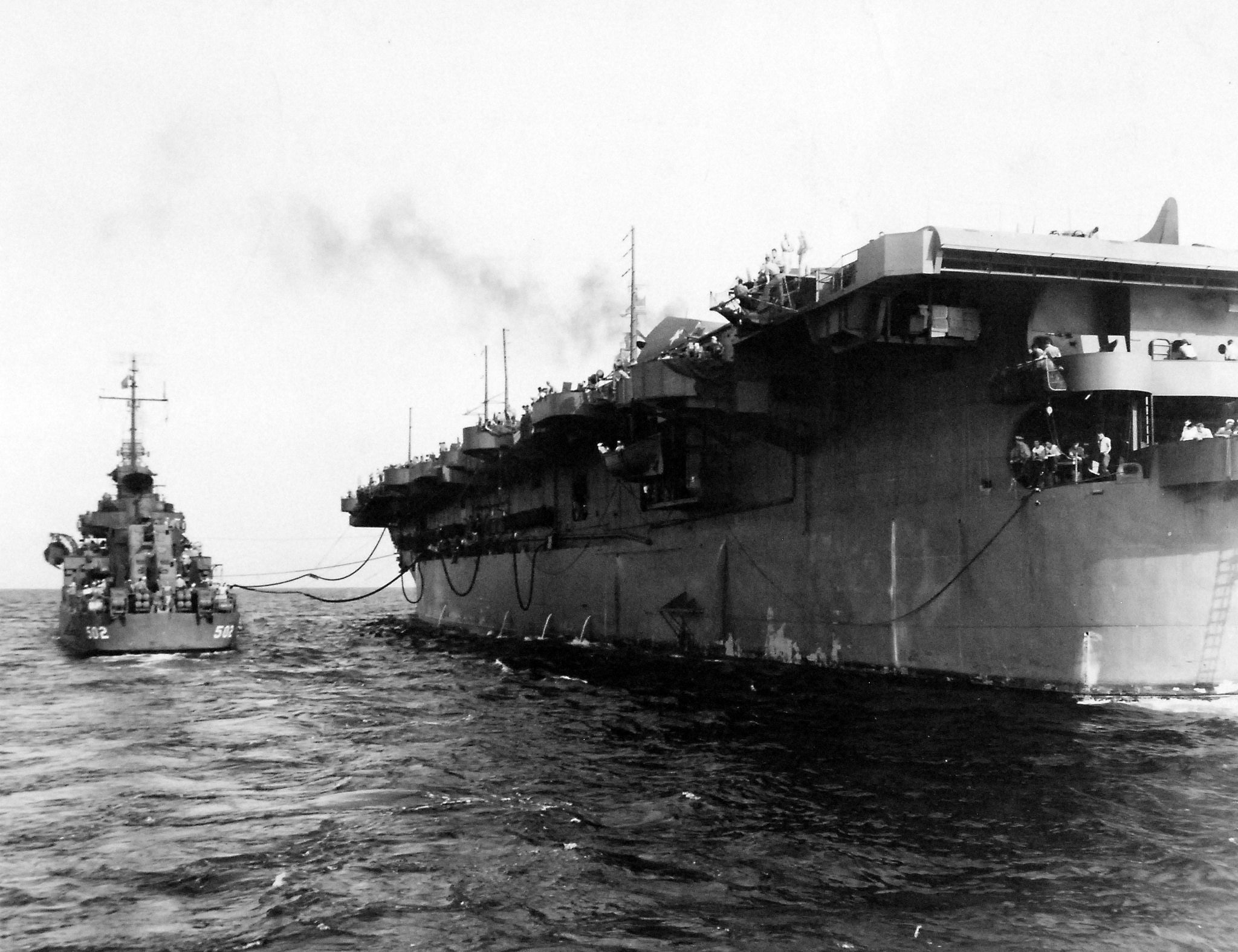
-63). Independence conducted shakedown training under her first captain, Captain R. Y. McElroy, with the first landing-on being carried out by a Grumman Trader carrier onboard delivery aircraft on 2 March 1959. She arrived at her new homeport of NS Norfolk, Virginia on 30 June 1959.
, and then carried out a ten-week training cruise in the Caribbean.[1][10] During these trails, while carrying out compatibility tests aboard the new carrier, a Douglas A3D Skywarrior was catapulted off Independence at a gross weight of 84,000 pounds (38,000 kg), the heaviest aircraft to take off from a carrier at the time.[11]
Persian Gulf allies began to enforce the ban on Iraqi planes from flying south of the 32nd parallel on August 27 in Operation Southern Watch. Any Iraqi planes that violated the ban would be shot down.
Twenty Navy aircraft from CVW-5 aboard Independence in the Persian Gulf were the first coalition aircraft on station over Iraq as Operation Southern Watch began. Southern Watch was the enforcement of a ban on Iraqi warplanes and helicopters from flying south of the 32nd parallel.
Seen just over three months after entering service, Independence is camouflaged in Measure 14, and has a few SBDs and TBMs on the flight deck forward. The contours of the port hull bulge can be seen.
A few weeks after this photo was taken, the bow and stern 5"/38 guns, fitted as original equipment, were each exchanged for one 40-mm quad. SK, SC-2 and SG radars were carried (Thanks to Robert Hurst, who provided additional information).
Alex Vraciu was the leading Navy "ace" between late June and late October 1944. He was shot down by AAA near Bamban Airfield (Philippines) on 14 December 1944; he was scooped up by friendly Filipino guerillas and spent some six weeks with them, behind enemy lines.
Vraciu is listed as the Navy's #4 ace, with 19 victories. After a brief stint at Pearl Harbor, the USS Independence was brought to San Francisco to be studied. Ultimately, the US Navy made the decision to scuttle the light carrier, as she was too old and far too vulnerable to potential espionage to see further use.
When the time came, she was struck by two torpedoes near the Farallon Islands, sinking below the water on January 29, 1951. In May 1973, President Richard M. Nixon delivered his annual Armed Forces Day address from the decks of Independence.
While based in Norfolk, the ship made deployments to the Mediterranean Sea and Indian Ocean. From 8 to 13 October 1973, Task Force 60.1 with Independence, Task Force 60.2 with Franklin D. Roosevelt (CV-42), and Task Force 61/62 with Guadalcanal (LPH-7) were alerted for possible evacuation contingencies in the Middle East.
as a result of the 1973 Yom Kippur War between Arab states and Israel. Independence operated off the island of Crete.
uss independence aircraft carrier ww2, uss independence cvl 22, uss independence crew list, uss independence lcs 2, uss independence cv 62, where are the carriers deployed, uss independence ww2, us aircraft carriers currently deployed
